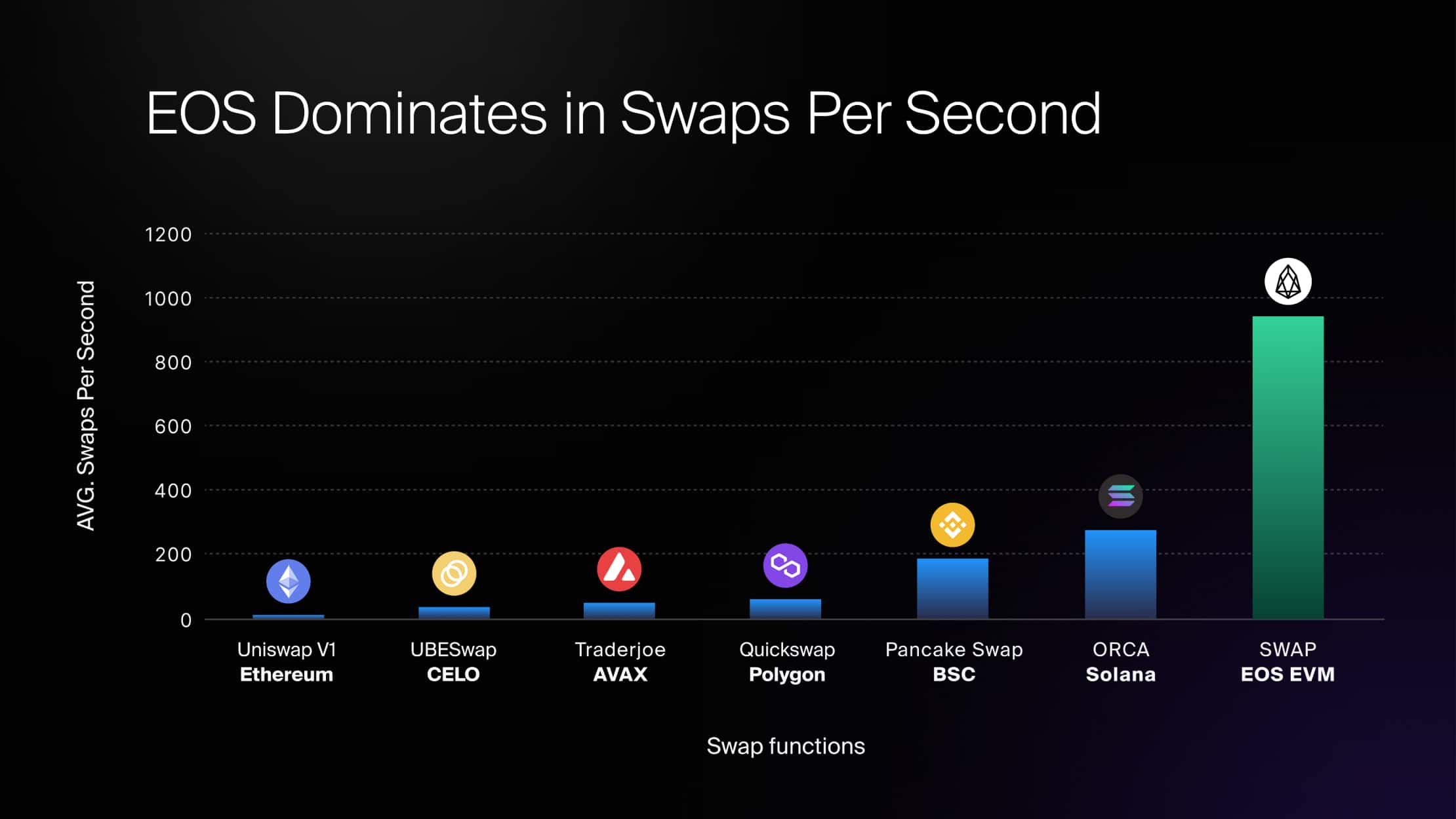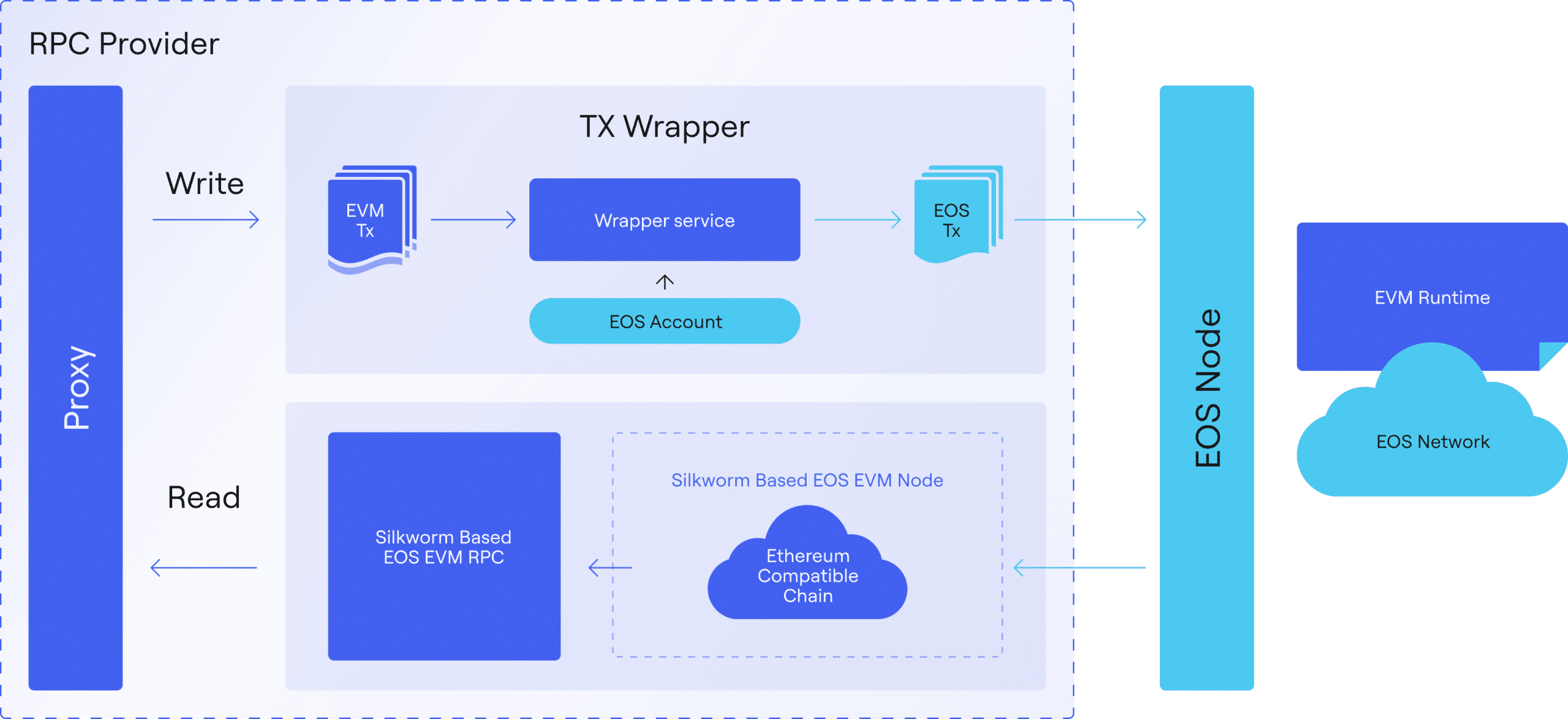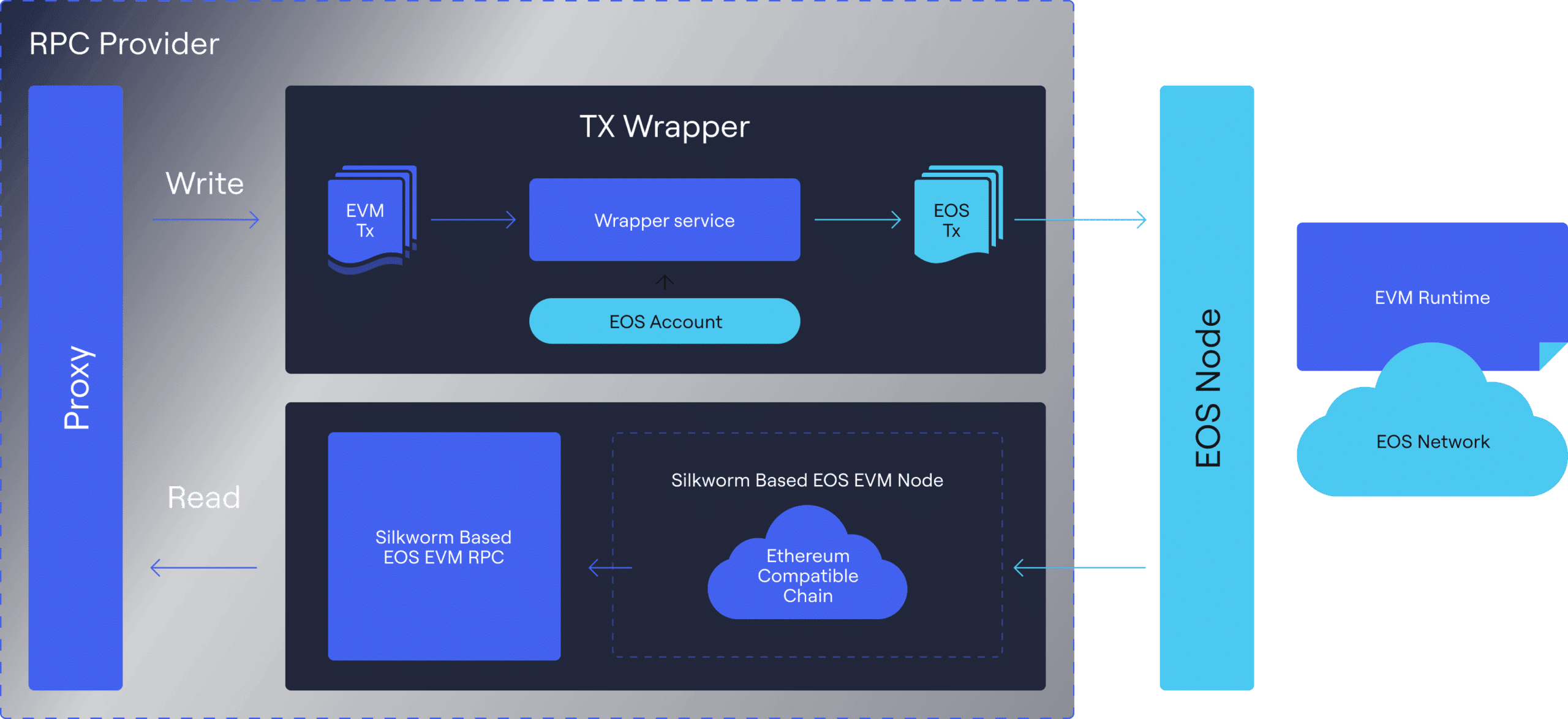EOS EVM
1 Second Block Times
The EOS EVM was designed to ensure maximum block time, while maintaining compatibility with other Ethereum-based ecosystems.
950+ Swaps Per Second
Swaps are complex actions for an EVM to take as they combine multiple smaller transactions. EOS EVM outperforms competitors in this area.
Negligible Gas Fees
High transaction fees can become a major deterrent to the end user. But the EOS EVM is designed to be a cost effective solution for all types of dApps.
Stable Gas Price
Gas fees on EOS EVM work differently than other EVMs. Even during times of high activity, they remain stable and affordable to the end-user.
C++ Infrastructure
By leveraging Silkworm, a C++ implementation of an Ethereum node, the EOS EVM is able to achieve maximum performance capabilities.
Climate Positive Design
The EOS network consumes significantly less energy than other blockchains. The little carbon that is produced is offset yearly.

Get Started on EOS EVM
In order to get up and running on the EOS EVM, you’ll need an EVM compatible wallet such as MetaMask. You can then use the details below to add EOS EVM or go to Chainlist to add it automatically.
- EOS EVM Contract account: eosio.evm
- Ethereum Compatible RPC Endpoint: api.evm.eosnetwork.com
- chain-id: 17777
Get a Wallet
Make sure you have an EVM Compatible wallet such as MetaMask. Don’t forget to add the EOS EVM as a custom network.
Get EOS
EOS is the native gas token powering the network. Purchase it on EOS Native then bridge it to your EOS EVM account to use.
Find a dApp
The ecosystem is growing fast, with new dApps added each month. Check them out to experience the unmatched performance of EOS EVM.

Feature Parity with Ethereum
Developers can easily deploy their smart contracts from other EVM compatible ecosystems and expect similar features and compatibility.
Launch Your Own EVM
Because EOS EVM operates as an open source smart contract running on EOS, it is possible for developers to launch their own EVM ecosystems.
Crypto Primitives & zK Compatibility
EOS EVM offers the ability for developers to build privacy into their dApps with enhanced zk-SNARKS support.
Unmatched Speed & Performance
The EOS EVM takes advantage of the powerful capabilities of EOS Native. This enables 1s Block Times, 950+ Swaps Per Second & more.
Enabling Ethereum Developers on EOS
Ethereum and EOS began as competing tech stacks, but as Web3 became more pluralistic in its design, Ethereum compatibility became a priority of the core developers. The launch of EOS EVM welcomes in a new era, where developers on EOS can access the vast library of battle-tested smart contracts that have become a cornerstone of the new internet. Similarly, EOS EVM allows developers in other Ethereum-compatible ecosystems to take advantage of unmatched performance and scalability, which was previously only offered to C++ and Wasm based applications.
A Closer Look at the EOS EVM Architecture
There’s a lot going on under the hood of the EOS EVM in order to ensure that it maximizes performance and ease of use. Designed as a smart contract, operating within the EOS Native layer, EOS EVM is a unique piece of Web3 infrastructure. If you’re new to the ecosystem, it can be difficult to fully understand how it works.
At its core, EOS EVM is an emulation of Ethereum’s EVM, launched on top of the EOS Native architecture. The infographic below provides a high level look at all the moving parts. Check out the Architecture Deep Dive for more information.


Explore the EOS Ecosystem
The EOS ecosystem is growing quickly with new dApps and integrations being added every month. Head to the ecosystem page to get started.